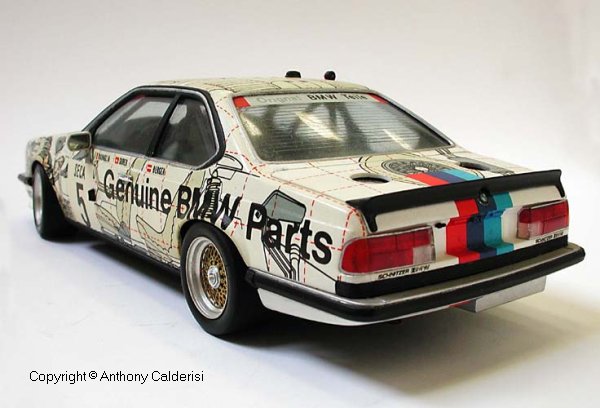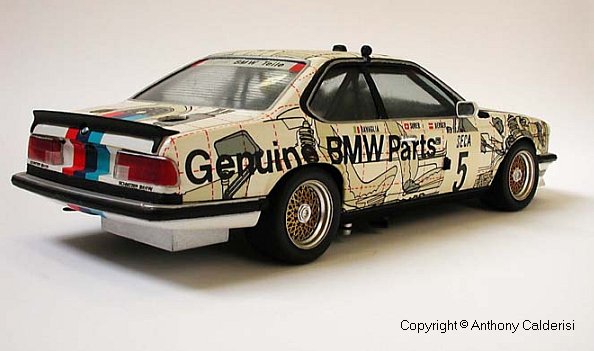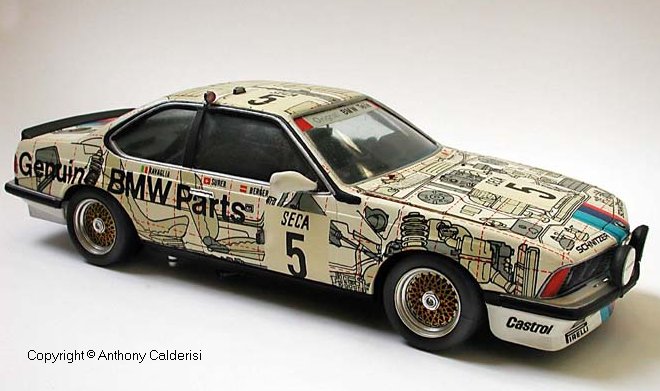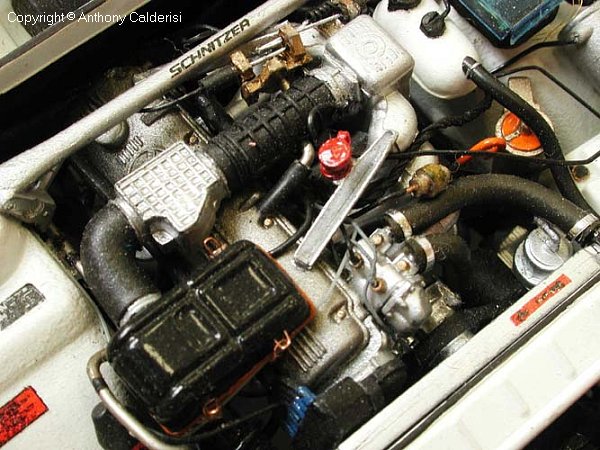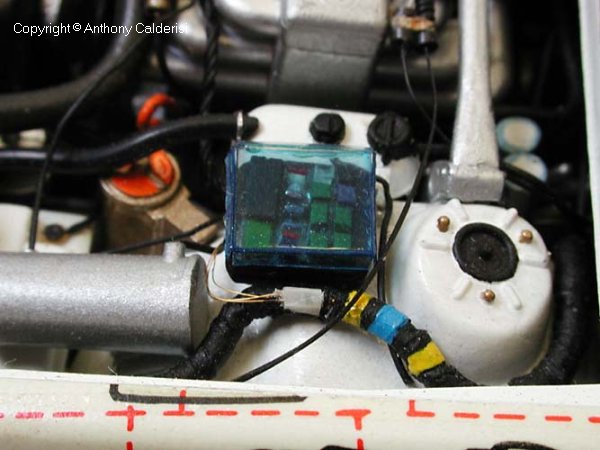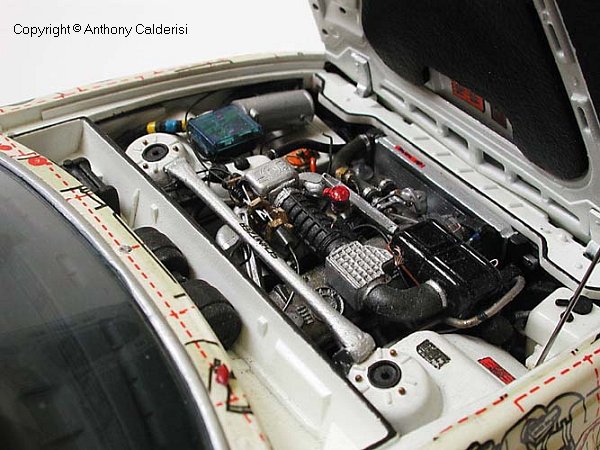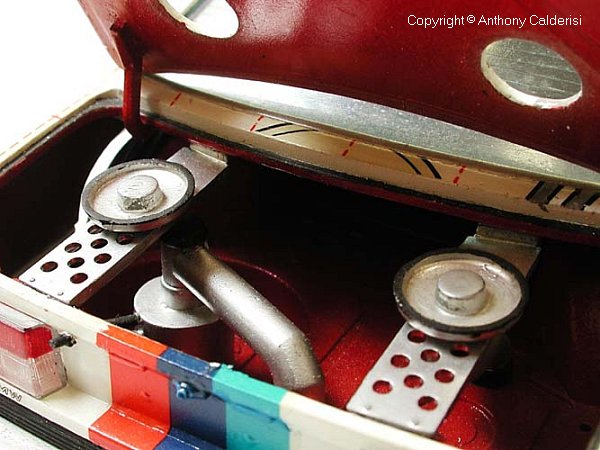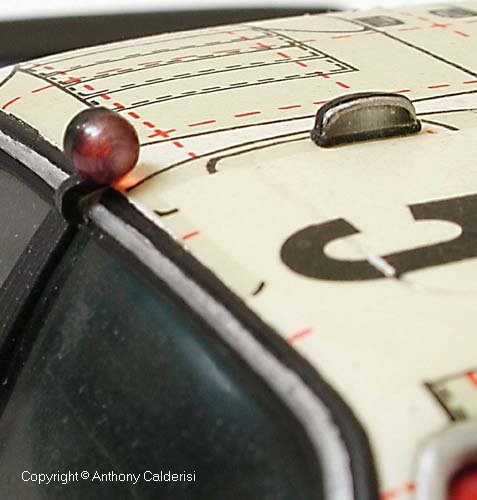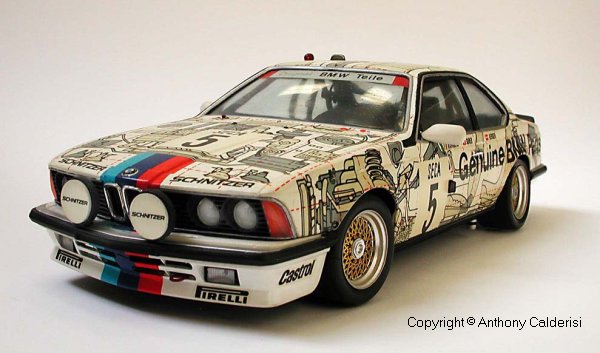
1/24 BMW 635 ETC
Model, Text and Photos by Anthony Calderisi
For the longest time the BMW 5 series was a favorite of mine. I was especially fond of the 533 and later the 535. At the time it was being powered by BMW's already famous inline 6. This same engine was also being used in the 635.
This excellent Fujimi kit represents the BMW 635 entered in the European Touring Car Championship (E.T.C.). It had an opening hood as well as trunk.
The admiration I had for this engine would propel me to faithfully reproduce it in every detail. Whereas today I have the experience of having done several engines, the one you see here is my very first.
Basically I had one photo reference for this engine taken from a BMW 5 series brochure. The photo was taken from above the car looking down into the hood. If only all reference pictures can be taken this way! The box art included pictures of the cars exterior which was also helpful. This 635 obviously came off the production line as a red car judging from the inside of the trunk.
I had very little tools at the time. I worked mostly with an X-acto knife, had paint brushes of course, some sandpaper I found in the house, wire I was starting to collect, and my dads old one speed drill with a few bits that were way too big for the scale I was working in. I didn't know of any special glues or aftermarket suppliers of photoetched parts or spark plug wires. I did have some styrene plastic and knew about stretching sprue. So the result you see was born from a couple of photos, found materials from around the house and a desire to super detail my favorite engine.
Most everything was done with my knife. In all, 63 scratchbuilt parts were added to this car, 95% of which are under the hood. The Fujimi kit was so accurate and detailed it actually made the job of wiring and
plumbing easier, not having to second guess location points for various hoses and wires. The water pump provided in the kit was perfect.
Looking back, I see the lack of planning on my part at the time, and less refined craftsmanship as the throttle linkage clearly shows. As a result, my method of working has changed. I've also discovered the ease and joy of working with good tools.
This model was made in the winter of 1987, and has only been protected against dust for the last 6 years. It's a bit on the rough side, decals are cracking etc. (Protect your models!)
I think this model demonstrates that you don't have to spend a fortune or own a miniature garage to be creative and do a good job.
